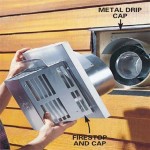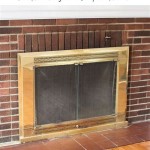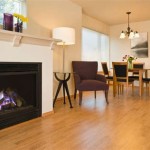Building an Outdoor Gas Fireplace: A Comprehensive Guide
An outdoor gas fireplace offers a focal point for any patio or backyard, extending the usability of outdoor spaces into cooler months. Unlike wood-burning fireplaces, gas fireplaces provide consistent heat, require minimal maintenance, and often feature cleaner, more efficient combustion. Constructing an outdoor gas fireplace is a substantial project that demands careful planning, adherence to local building codes, and, ideally, some experience in masonry and gas line installation. This article provides a detailed overview of the process, covering essential considerations and construction steps.
Planning and Preparation: Laying the Groundwork for Success
Before beginning any construction, thorough planning is paramount. This phase involves assessing the desired location, determining the fireplace's size and style, and confirming local regulations. Ignoring these preliminary steps can lead to costly modifications or even the necessity to dismantle and rebuild the entire structure.
Location Assessment: The ideal location for an outdoor gas fireplace should be easily accessible, sheltered from prevailing winds, and located a safe distance from flammable materials such as trees, fences, and overhanging structures. Consider the prevailing wind direction to minimize smoke and heat blowing into seating areas. Evaluate the ground's stability and drainage. Uneven or poorly drained ground necessitates additional preparatory work to ensure a stable and level foundation. Furthermore, consider proximity to existing gas lines; a shorter run is significantly less expensive and simpler to install. However, ensure that the location complies with minimum clearance requirements from property lines and structures, as stipulated by local building codes.
Design and Style Selection: The aesthetic design of the fireplace should complement the existing outdoor space. Common styles range from traditional brick fireplaces to more modern designs incorporating stone, concrete, or metal. Consider the size of the space and the intended use of the fireplace. A larger fireplace provides more heat but also consumes more space. Decide on the specific features, such as a mantel, hearth, or integrated seating. Develop detailed plans or sketches that include precise measurements of all components, including the firebox, chimney, and surrounding structure. These plans will serve as a blueprint throughout the construction process.
Permits and Regulations: Before commencing any work, it’s crucial to obtain the necessary permits from local authorities. Building codes vary by jurisdiction and often dictate specific requirements for fireplace construction, including foundation depth, firebox dimensions, chimney height, and gas line installation. Contact the local building department to understand the specific regulations and obtain the required permits. Gas line installation typically requires a separate permit and must be performed by a licensed gas fitter or plumber. Failure to comply with building codes can result in fines, delays, and the requirement to dismantle and rebuild non-compliant portions of the fireplace.
Material Selection: Selecting appropriate materials is essential for the fireplace's durability, safety, and aesthetic appeal. The firebox, the internal component that houses the gas burner, must be constructed from fire-resistant materials such as firebrick or refractory concrete. These materials withstand high temperatures without cracking or deteriorating. The exterior of the fireplace can be constructed from a variety of materials, including brick, stone, concrete blocks, or stucco. Ensure that all materials are rated for outdoor use and are resistant to weathering and temperature fluctuations. Use high-temperature mortar designed for fireplace construction to ensure proper bonding between bricks or stones. Choosing the right gas burner is also critical. Gas burners are rated in British Thermal Units (BTUs), which indicate the amount of heat they produce. Select a burner with an appropriate BTU rating for the size of the firebox and the desired heat output. Consider features such as electronic ignition, flame height adjustment, and safety shut-off valves.
Construction Process: From Foundation to Finish
The construction of an outdoor gas fireplace is a multi-stage process that typically involves building the foundation, laying the firebox, constructing the chimney, and installing the gas line. Precision and attention to detail are critical at each stage to ensure the fireplace is structurally sound and operates safely.
Foundation Construction: The foundation provides a stable base for the fireplace and prevents settling or shifting over time. Excavate the area to the required depth, as specified by local building codes or engineering plans. In colder climates, the foundation must extend below the frost line to prevent heaving during freeze-thaw cycles. Pour a concrete footing, reinforcing it with rebar for added strength. The footing's thickness should be proportional to the size and weight of the fireplace. Allow the concrete footing to cure completely before proceeding with the next stage. Once the footing is cured, construct a concrete block or poured concrete foundation wall, ensuring it is level and square. Backfill around the foundation walls with compacted gravel to provide proper drainage.
Firebox Construction: The firebox is the heart of the fireplace and must be built to withstand extreme temperatures. Begin by laying a course of firebrick or refractory concrete on top of the foundation, using high-temperature mortar. Ensure that the firebox is properly sized to accommodate the chosen gas burner and allows for adequate ventilation. Construct the firebox walls using firebrick or refractory concrete, staggering the joints between each layer for added strength. Install a lintel or arch above the firebox opening to support the weight of the chimney. The lintel or arch should be constructed from fire-resistant materials and securely mortared in place. Create a smoke chamber above the firebox to collect and direct flue gases into the chimney. The smoke chamber should be angled to promote efficient drafting. Install a damper to control airflow and prevent drafts when the fireplace is not in use.
Chimney Construction: The chimney provides a pathway for hot gases to escape and creates a draft that draws air into the firebox. Construct the chimney using brick, stone, or concrete blocks, ensuring it extends above the roofline or any nearby obstructions. The chimney height should be sufficient to create a proper draft, as specified by local building codes. Line the chimney with a flue liner made of clay, metal, or concrete to protect the surrounding masonry from heat and corrosive gases. The flue liner should be properly sized to match the firebox and chimney dimensions. Install a chimney cap to prevent rain, snow, and animals from entering the chimney.
Gas Line Installation: Gas line installation must be performed by a licensed gas fitter or plumber to ensure safety and compliance with local regulations. Run a gas line from the main gas supply line to the fireplace location. The gas line must be properly sized to provide sufficient gas flow to the burner. Install a shut-off valve near the fireplace to allow for easy maintenance and emergency shut-off. Connect the gas line to the gas burner according to the manufacturer's instructions. Test the gas line for leaks using a soap solution. Any leaks must be repaired before continuing. Install the gas logs or decorative elements according to the manufacturer’s instructions. These components are designed to enhance the fireplace's aesthetic and ensure safe and efficient gas combustion.
Finishing Touches and Safety Considerations
Once the structural components are complete and the gas line is installed, the focus shifts to finishing the exterior, ensuring proper ventilation, and implementing safety measures.
Exterior Finishing: The exterior finish should complement the surrounding landscape and architectural style. Apply a layer of stucco, stone veneer, or brick to the fireplace exterior, following the manufacturer's instructions. Ensure that the finish is properly sealed to prevent water damage. Install a mantel or hearth using durable, weather-resistant materials. The mantel and hearth provide a decorative element and a safe surface for placing items near the fireplace. Consider adding lighting to illuminate the fireplace area and enhance its aesthetic appeal. Install landscape lighting to create a warm and inviting ambiance.
Ventilation and Airflow: Proper ventilation is essential for safe and efficient operation of a gas fireplace. Ensure that the firebox and chimney are free from obstructions that could impede airflow. Provide adequate ventilation in the surrounding area to prevent carbon monoxide buildup. Regularly inspect the fireplace for signs of damage or deterioration, such as cracks in the masonry or corrosion of the gas line. Repair any damage promptly to prevent safety hazards.
Safety Measures: Install a carbon monoxide detector in the vicinity of the fireplace to alert occupants of potentially dangerous levels of carbon monoxide. Keep flammable materials, such as furniture and curtains, a safe distance from the fireplace. Never leave the fireplace unattended while it is in operation. Supervise children and pets near the fireplace to prevent accidents. Ensure that all users are familiar with the operation of the fireplace and the location of the shut-off valve. Schedule regular maintenance checks by a qualified technician to ensure the fireplace is operating safely and efficiently. A professional inspection can identify potential problems before they become serious hazards.

How To Build An Outdoor Gas Fireplace Fireplaces Direct Learning Center
:max_bytes(150000):strip_icc()/chrisjulia-971f3f9eb708447bbd364fc7f4a16280.jpg?strip=all)
10 Free Outdoor Fireplace Construction Plans

How To Build An Outdoor Gas Fireplace Fireplaces Direct Learning Center

How To Plan For Building An Outdoor Fireplace

How To Build An Outdoor Fireplace Step By Guide Buildwithroman

How To Make An Outdoor Gas Fireplace With Diy Pete

How To Build An Outdoor Stacked Stone Fireplace

How To Build A Gas Fire Pit Woodlanddirect Com

Outdoor Fireplace Builds And Installs Custom Built Backyard Fireplaces

Build An Outdoor Fireplace The Shed
Related Posts








